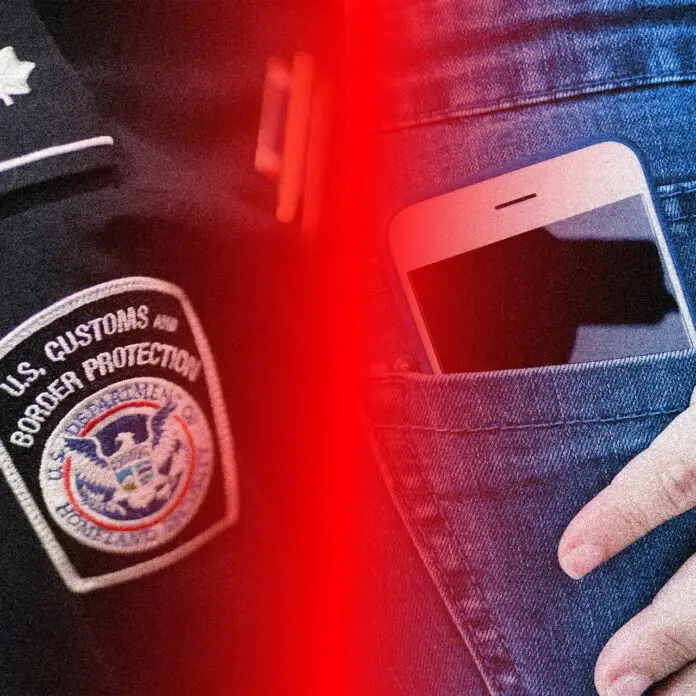As tensions rise at the US-Mexico border, international travelers are being detained, questioned, and even deported over concerns related to content on their phones. With demand for flights plummeting, many are reevaluating their travel plans due to the increasingly volatile nature of US Customs and Border Protection (CBP) policies.
For those who cannot avoid crossing borders – whether returning home after work or visiting friends and family abroad – carrying a smartphone with personal information can be a risk. While other nations also have powers to inspect phones, the Trump administration’s border policies are causing concern among travelers.
In recent weeks, multiple visitors have reported being questioned or turned away at the US border in relation to content on their phones. This has prompted Canadian authorities to update travel guidance warning of phone searches and seizures, while corporate executives are reconsidering the devices they carry and officials in Europe are receiving burner phones for certain trips.
The Committee to Protect Journalists has also warned foreign reporters about device searches at the US border. To help mitigate these risks, WIRED has compiled a guide on how to protect your smartphone when crossing into the United States.
Understanding CBP’s Authority
US Customs and Border Protection officials have the authority to search people’s phones and other devices as they determine who is allowed to enter the country. This power allows them to conduct either manual searches or more advanced forensic tool searches to extract data en masse.
Border officials can request access to a traveler’s phone by asking for their PIN or biometric information to unlock the device. However, the traveler’s legal status and right to enter the US will influence what kind of search they may face at the border.
What You Need to Know
* Border zones, including international airports, fall outside Fourth Amendment protections that typically require a warrant for a device search.
* CBP has the power to search any traveler’s phone or other electronic devices when entering the country.
* US citizens and green card holders can refuse a device search without being denied entry, but they may face additional questioning or temporary device seizure.
* US visa holders and foreign visitors who refuse a device search can face detention and deportation.
Assessing Your Risk
According to Molly Rose Freeman Cyr of Amnesty International’s Security Lab, “Not everybody has the same risk profile.” Factors such as a person’s legal status, social media accounts, messaging apps used, and chat content should all be considered when evaluating the risks associated with carrying a smartphone across borders.
Protecting Yourself
To minimize the risks, travelers can take steps to protect their devices and data. This includes:
1. Using secure devices and operating systems.
2. Encrypting sensitive information.
3. Deleting unnecessary data before crossing borders.
4. Avoiding storing sensitive information on devices that may be subject to search.
By being aware of these risks and taking proactive steps to protect their devices, travelers can reduce the likelihood of encountering problems at the US border.
Source: Wired




